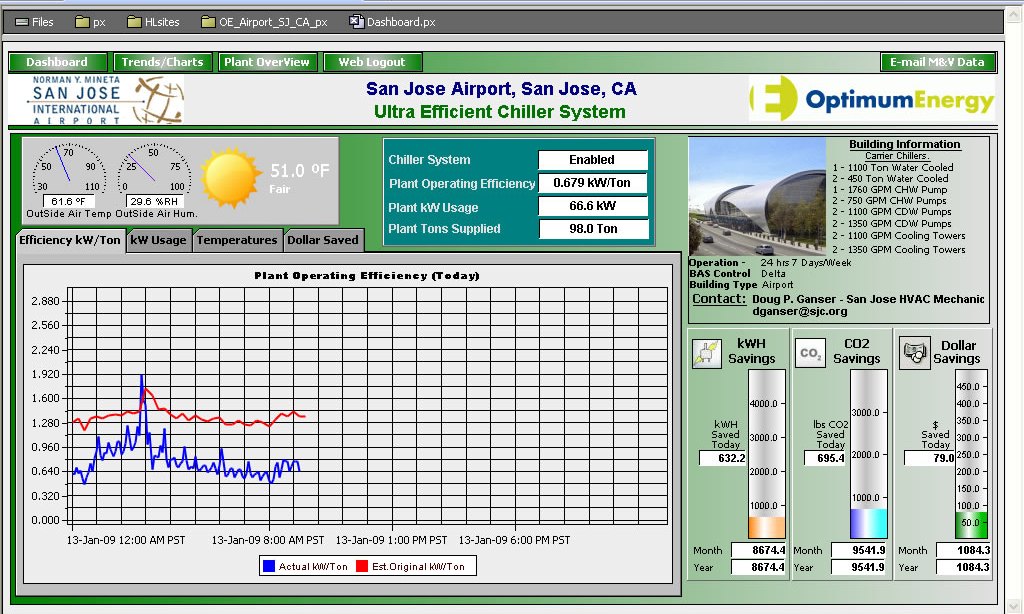Let's do this now, why wait?

CEO Nathan Rothman told me by phone that we have the technology now to completely upgrade and enhance our use of energy in America. But we seem to lack the will. America is about change and innovation, Rothman says. And there are lots of jobs to be created if we get to work. "What are we afraid of?" I wondered. What's wrong with us that we don't just get working? I suggested that change would upset a lot of very rich vested interests who really love the status quo, even if that means burning coal by the mega-ton and importing a billion dollars worth of oil every day. OPTIMISM FROM OPTIMUM
Rothman is CEO of Optimum, and he's actually quite optmistic. We Americans can and should solve our energy problems. Now, not gradually as we work toward 2020, he says. Optimum is a company that promises to make huge energy savings in America's many large buildings as they exist now. Optimum is about making the best use possible of existing HVAC systems. They offer a management software solution that works with any manufacturer's hardware already in place. And Optimum doesn't require heavy staffing by building operations personnel. The software reads meters, calibrates, calculates and regulates, by remote control.
Optimum goes well beyond the thermostat and the old on-off switch. Rothman explained: two cooler fans running at half speed use less than one-third as much energy as one of the fans at top speed. No human operator is going to have time to constantly recalculate what speed each cooler or circulation fan or rooftop ventilator should run at. Optimum's software can do that and then let the various mechanisms know what to do to maximize efficiency, reduce energy waste. Ever walked into a conference room first thing in the morning and found it at around sixty degrees? What a waste. That air conditioning of an empty room all night could be eliminated by a smart HVAC system. QUICK PAYBACK
Optimum says they're top selling point: rapid ROI. Three years or less and the system pays for itself in energy savings in a standard office or business building. If energy prices go higher the payback gets quicker, of course. Rothman mentioned that Seattle, where there are a few servers operating 24-7 in big buildings, just had a 25% electricity rate increase.
Rothman says they've found energy savings in most applications are over 50%. That's true even in the brand new Mineta Airport in San Jose. That was built up to high LEED standards, but when Optimum added their services the savings topped 50%. Also, Optimum can help save water, the liquid used in large buildings' cooling systems. At the Mineta Airport they've saved over $150,000 in annual costs including over 1.5 million gallons of water in droughty California.

So how big a deal is this? Almost 40% of America's energy is used in heating, cooling and powering buildings. Rothman gave me this example: a thirty-story building would use huge engines to run big fans, the equivalent of 1500-2000 horsepower. That in turn is the equivalent of a locomotive engine. If you can make those engines 30-60% more efficient? Big deal.
Rothman says the standard for efficiency in building HVACs is kilowats of electricity needed for a ton of chilled water. Optimum, he says, can lower that figure even if it is a new server farmt hat operates at .7 KW. Most older buildings are above 1 KW per ton of chilled water. Their savings would be nearer the 60% mark on HVAC energy costs. Modern boilers are highly efficient, says Rothman, so the big savings come from the cooling units which are inefficient as currently operated.
Optimum customers include IBM, GE and the Hong Kong Police headquarters. Optimum Energy’s solutions are in more than 60 installations across the U.S. and the globe, including: office towers, airports, medical facilities, shopping centers, university campuses, convention centers, as well as public sector buildings of all types, including libraries and courthouses.